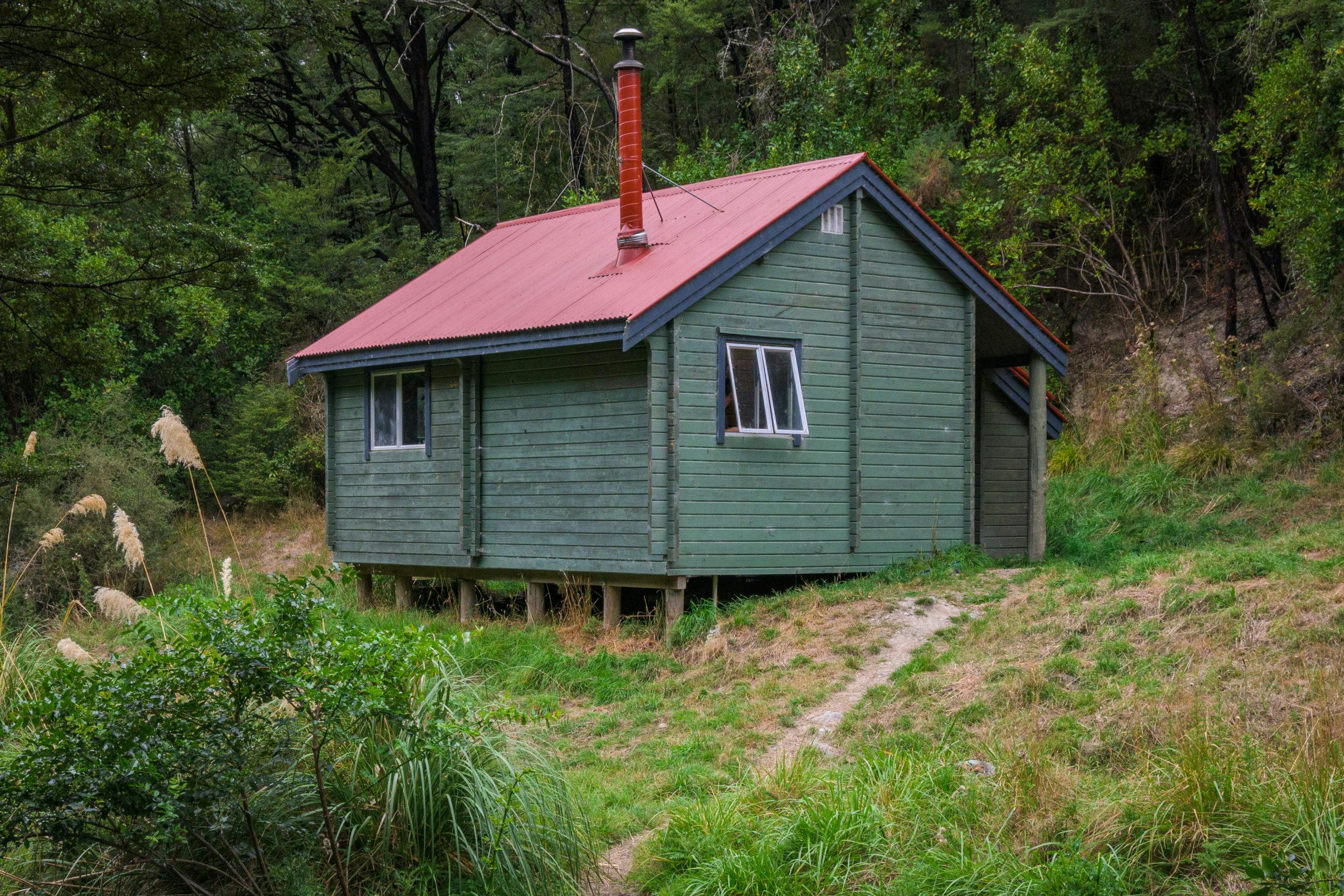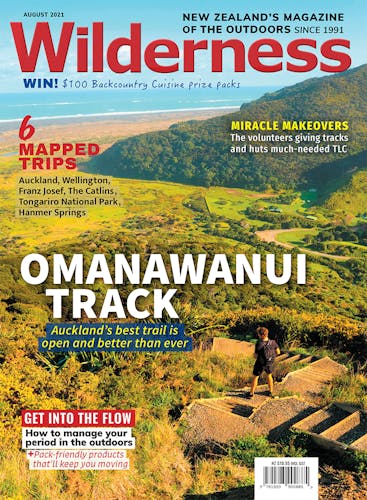Private companies Fraemohs and Lockwood once competed to create the best hut.
Distinctive, solid huts made of locking timber with the air of yesteryear. You encounter them in various parts of the backcountry: Tongariro, the Kaimanawa and Ruahine Ranges, Arthur’s Pass, parts of the Canterbury foothills, and on the West Coast.
Between the 1950s and mid-1980s, New Zealand’s track and hut network was managed by the Department of Lands and Survey, and the New Zealand Forest Service. While both these government agencies were responsible for building their own huts, they occasionally contracted out the work to private enterprise. Beginning in the late 1960s, two competing building companies, Lockwood in Rotorua and Fraemohs in Christchurch, provided the design for a new style of backcountry hut. These were moderate-sized or larger huts, and the all-wood, interlocking construction was solid and provided insulation.
While superficially alike, both companies claimed their own design was superior; if anything, Fraemohs had the edge; their huts weren’t as creaky. When I first encountered one of these designs at Sunrise Hut, in Ruahine Forest Park, I assumed it was a Lockwood – the same design as one of the houses my parents had rented in Napier. Only later did an ex-NZFS ranger point out to me that Sunrise was in fact a Fraemohs design.
Sunrise has since been expanded and altered to the point where its Fraemohs origins are now almost invisible, leaving the Ruahine Range with one other Fraemohs Hut still intact: Barlow. It and the three others detailed here make great tramping destinations.
While they no longer provide huts, bothLockwood and Fraemohs are still designing and building houses.
1. Barlow Hut, Ruahine Forest Park
The eight-bunk Barlow Hut sits on a terrace above the Makarora River, a 3hr walk from the end of Wakarara Road. While making a pleasant destination for an overnight tramp, it’s also an excellent launching point for trips further into the Ruahine Range with a track linking from the hut to Colenso Spur.
2. Pinchgut Hut, Mt Thomas Conservation Area
The forests of Mt Thomas sprawl over the foothills rising above the north Canterbury township of Oxford. An enjoyable weekend tramp begins from the Wooded Gully car park to reach a Fraemohs hut called Pinchgut. Head up Wooded Gully Track onto the ridge crest, strike north-west on a poled route, then at a junction descend down the Whare Route to reach the eight-bunk hut nestled beside Pinchgut Stream (allow 4-5hr). To complete a round-trip, head out via the Cattle Peak and Bobs Camp routes.
3. Camp Creek Hut, West Coast
The six-bunk Camp Creek Hut began life as a research base for forest service scientists in 1979, but was later converted to a tramping hut. Situated on the lower flanks of the Alexander Range, it’s reached on a bush track from Lake Brunner Road (allow 3hr, and expect some stream fords en route). Beyond the hut, a steep route leads onto the tops and Mt Alexander (1958m).
4. Māori Saddle Hut, Haast-Paringa Cattle Track
Once the major route for driving stock north from the isolated settlements of South Westland, the Haast-Paringa Cattle Track now serves as a tramping route of historic interest. Beginning in the north from SH6, allow 6-8hr to reach the Fraemohs Māori Saddle Hut (10 bunks). With the recent opening of theMataketake Hut on the tops above, accessible by a connecting track from Māori Saddle, it’s now possible to complete an interesting round-trip of 3-4 days.








